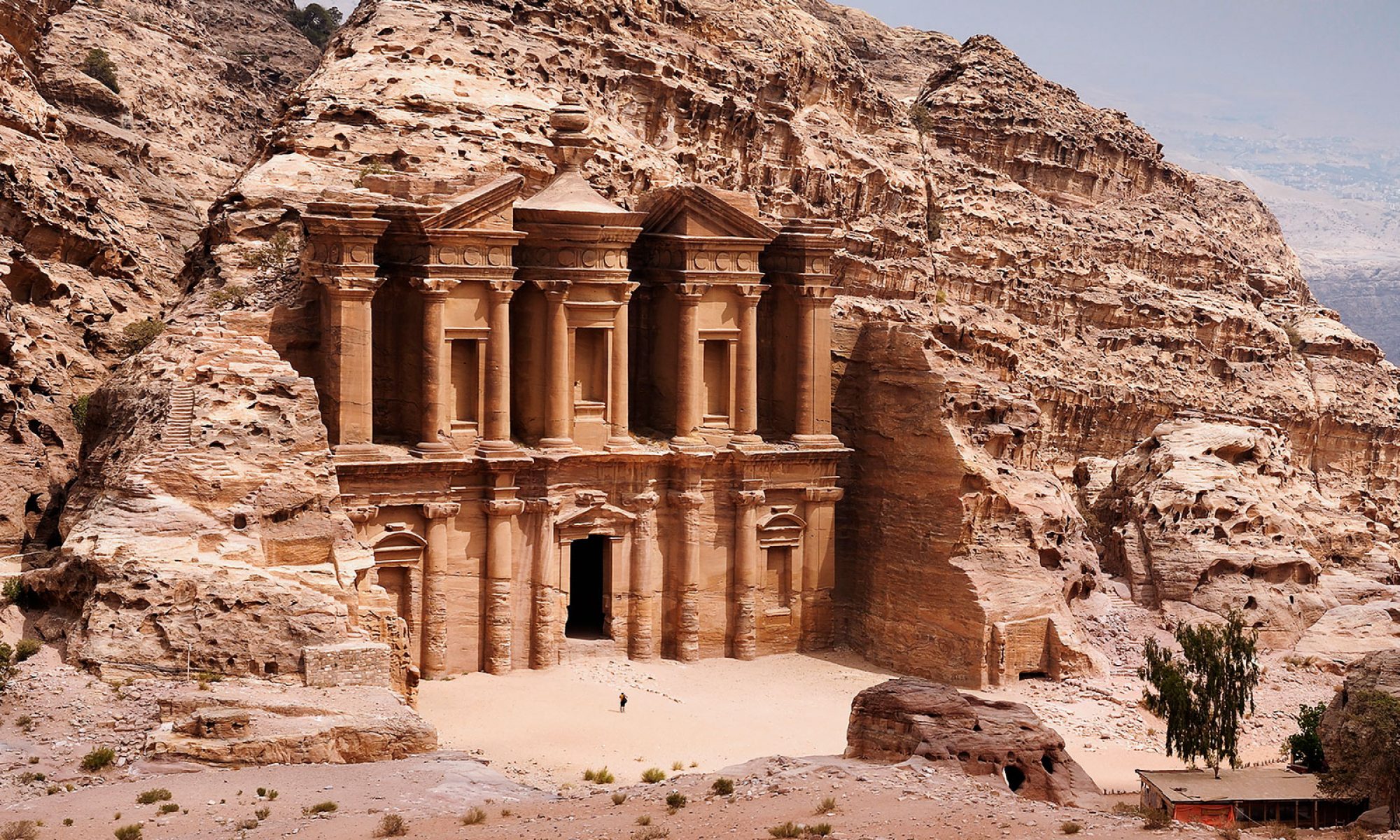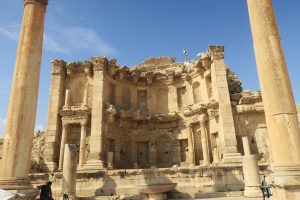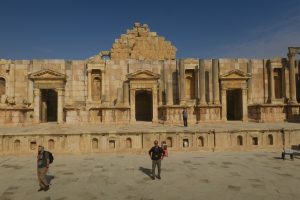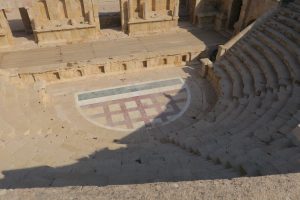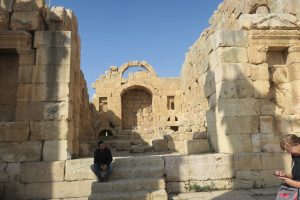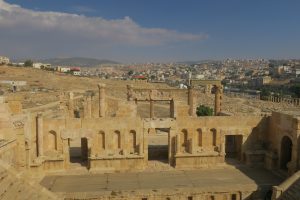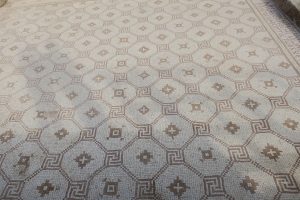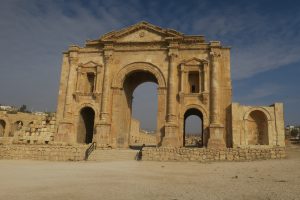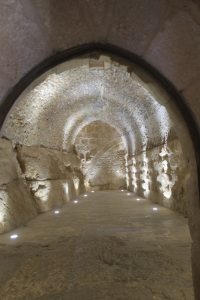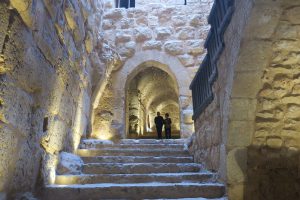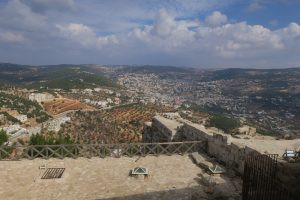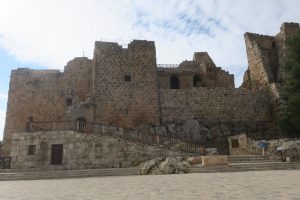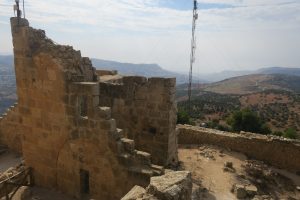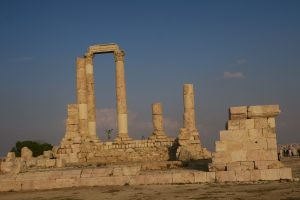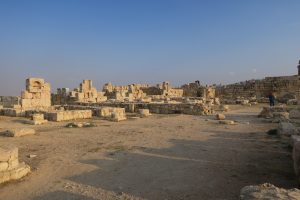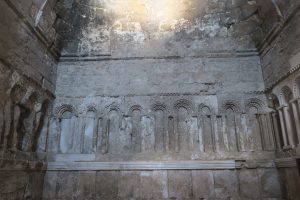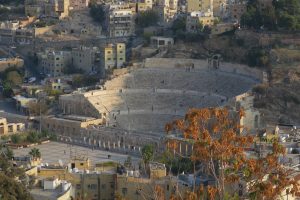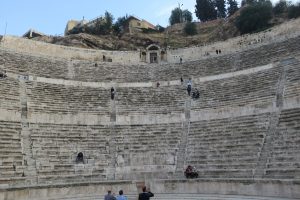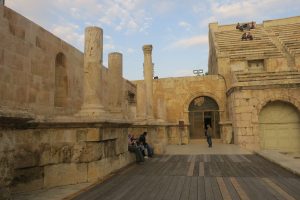This morning we met our new guide, Mustafa. He was not our originally assigned guide, Malek. It turned out that Malek had a conflict which was really lucky for us because Mustafa was one of the best guides we have ever had. We learned he works in the IT department at the US embassy in Amman. He is also licensed tour guide and the owner of our tour company.
Our first stop was Jerash. On the way to Jerash Mustafa gave us a lot of information about Jordan. Jordan is home to 10 million people, 1.2 million of which live in Amman. Almost 70% of the people live in urban areas. Jordan’s economy is based on phosphates, potash, and their fertilizer derivatives; tourism; overseas remittances; and foreign aid. The main obstacles to Jordan’s economy are scarce water supplies, complete reliance on oil imports for energy, and regional instability. Just over 10% of its land is arable and the water supply is limited. Rainfall is low and highly variable, and much of Jordan’s available ground water is not renewable. Jordan is about the size of Indiana.
Jordan’s population has increased significantly over the past 50 years. Mustafa also told us that originally the Palestinians carried Jordanian passports. Eventually Palestine started issuing their own passports, but not before many Palestinians immigrated to Jordan. Jordan has also taken in about 700,000 Syrian refugees who are mostly housed in camps near the border.
Trade routes played a significant role in shaping Jordan’s history. Jordan is a gateway between Africa and Europe and Asia. Much of what we saw was historical and the result of the trade route/caravan economy. Jordan was captured by Alexander the Great. After his untimely death all of Greece’s territories were split among Alexander’s generals. One general’s capital was in Syria and one in Egypt. These two generals primarily remained in their capitals to consolidate power and Jordan was largely left alone. The overland trade routes became much less important when the Romans developed the technology needed to move goods across the Mediterranean by ship.
After a great overview of Jordan, we arrive in the town of Jerash. People had been settled there since the Neolithic age but it really grew during the Greek and Roman periods as a result of the trade routes. It is amazingly well preserved. Here are some pictures.
After Jerash we went to Ajloun Castle, a 12th-century Muslim castle situated in northwestern Jordan. It protected the trade routes and defended the country against Crusader incursions. It was reinforced and enlarged over time. Two major destructive earthquakes struck the castle in 1837 and 1927.
We headed back to Amman where we had lunch. Mustafa was going to take us to a vegetarian restaurant but at my request we had lamb mansouf, a Jordanian favorite and quite yummy.
After lunch we when to the Amman Citadel. There is evidence that this area has been occupied since the neolithic period. The Citadel of Amman is considered to be among the world’s oldest continuously inhabited places. Most of the buildings still visible at the site are from the Roman, Byzantine, and Umayyad (a Muslim empire from 661 – 750 AD) periods. The major buildings at the site are the Temple of Hercules, a Byzantine church, and the Umayyad Palace. Here are some pictures.
From the citadel we could see the roman theater which is from the 6th century and has a capacity of 6,000. It dates back to when the city was known as Philadelphia. It was built into the hillside, oriented north to keep the sun off the spectators. After walking around the citadel we went to the roman theater.
Mustafa dropped us off at the hotel. We ate the rest of the food we bought yesterday and packed up because tomorrow we head towards Petra.
